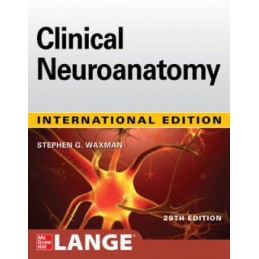- Obniżka


 Dostawa
Dostawa
Wybierz Paczkomat Inpost, Orlen Paczkę, DHL, DPD, Pocztę, email (dla ebooków). Kliknij po więcej
 Płatność
Płatność
Zapłać szybkim przelewem, kartą płatniczą lub za pobraniem. Kliknij po więcej szczegółów
 Zwroty
Zwroty
Jeżeli jesteś konsumentem możesz zwrócić towar w ciągu 14 dni*. Kliknij po więcej szczegółów
A comprehensive, color-illustrated guide to neuroanatomy and its functional and clinical applications
Engagingly written and extensively illustrated, Clinical Neuroanatomy, Twenty-Ninth Edition gets you up to speed on neuroanatomy, its functional underpinnings, and its relationship to the clinic. Youll learn everything you need to know about the structure and function of the brain, spinal cord, and peripheral nerves. This authoritative guide illustrates clinical presentations of disease processes involving specific structures, explores the relationship between neuroanatomy and neurology, and reviews advances in molecular and cellular biology and neuropharmacology as related to neuroanatomy.
The book is packed with case studies and hundreds of visuals—including CT and MRI scans, block diagrams showing muscle actions, root-by-root and nerve-by-nerve images of sensory areas and muscle intervention, and more—to help you retain critical information.
Essential for board review or as a clinical refresher, Clinical Neuroanatomy features::
Opis
